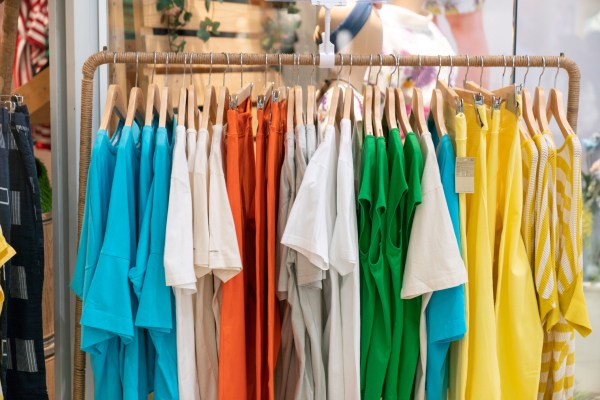The news this morning that e-commerce marketplace Etsy will buy Depop, a startup that provides a secondhand e-commerce marketplace, for more than $1.6 billion may not have made a large impact on the acquiring company’s share price thus far, but it provides a fascinating look into what brands may be willing to pay for access to the Gen Z market.
What Etsy is buying is not merely a source of GMS and net losses. It’s buying access to Gen Z.
First, a few details: Per Etsy, the Depop deal is worth “$1.625 billion consisting primarily of cash, subject to certain adjustments for Depop’s working capital, transaction expenses, cash and indebtedness, and certain deferred and unvested equity for Depop management and employees.” So, $1.625 billion, plus or minus. We’ll use that number this morning.
Because Etsy is a public company and the transaction is material, it provided a good deal of information on the acquisition. The key facts that relate to the scale of Depop’s business are as follows:
- 2020 gross platform spend, revenue: “Depop’s 2020 gross merchandise sales (GMS) and revenue were approximately $650 million and $70 million, respectively, each increasing over 100% year over year.”
- Historical gross platform spend trend: “Depop’s GMS grew at a compounded annual growth rate of nearly 80% from 2017-2020.”
At $70 million in 2020 revenue, Depop is being valued at a multiple of 23.2x of the previous year’s top line. That’s rich, but not impossibly high for a company that just had a huge pandemic year. (Though it is somewhat notable that Etsy is valuing Depop as if it was a high-growth SaaS business and not a consumer marketplace.)
The category of e-commerce performed well during the pandemic, implying that Depop’s nonpandemic growth rate would have been lower than what it ultimately recorded. How can we tell? The company’s historical GMS spend figure of “nearly 80%” from 2017 to 2020 is inclusive of the 100%+ GMS growth it recorded last year. We can infer, then, that in 2017, 2018 and 2019, GMS at Depop grew at a slower pace, namely one that is under the 80% mark.
A good question at this juncture is whether it feels like Etsy is being forced to pay an outsized premium for Depop. Thankfully, Depop competitors Poshmark and ThredUp are public companies. This provides us with a numerical footing to stand on.
Here are each rival’s present-day revenue multiples, which are inherently more conservative than Depop’s 2020 revenue multiple because they are inclusive of more recent revenue data (market cap data via Google and Yahoo finance properties; revenue data via the companies):
- Poshmark run-rate multiple, set using Q1 2021 data: 10.8x.
- ThredUp run-rate multiple, set using Q1 2021 data: 9.6x.
For additional reference, Poshmark grew revenues by 42% and ThredUp by 15.2% in their most recent quarters. In this context, the Depop multiple makes some sense; the company is growing more quickly, so it’s collecting a higher multiple.
Do profits come into play in our work this morning? Not really. Both Poshmark and ThredUp lost money in the first quarter ($74.5 million and $16.2 million, respectively, though each recorded higher-than-normal share-based compensation costs in their most recent financial periods). Depop also loses money, with Etsy noting in its release that:
Depop is expected to be accretive to Etsy’s top-line growth rate and modestly dilutive to Etsy’s adjusted EBITDA margin.
Because all three lose money, it’s hard to say that any single player from the group should be worth more or less than its rivals in multiples terms thanks to profitability. It would be easier to swallow the Depop multiples premium over its public rivals if it made money. The fact that it does not means that we can only really weigh growth rates and revenue multiples.
With that in mind, paying 2x or more Poshmark’s current multiple (depending on how strong of a Q1 2021 Depop managed) for twice the growth feels very nearly almost reasonable.
The gut feeling we have that Depop’s takeover is not cheap is undergirded by the fact that its 2020 results will be hard to repeat in 2021. Without COVID tailwinds, how quickly will Depop keep growing, especially from a recently doubled revenue base? If you expect even modestly material revenue growth deceleration at Depop this year, it becomes a more complicated purchase.
But we’re doing too much work. What Etsy is buying is not merely a source of GMS and net losses. It’s buying access to Gen Z. At least that’s its pitch to investors. From its release:
- Approximately 90% of Depop’s active users are under the age of 26; and young consumers are adopting secondhand fashion faster than any other audience;
- According to Depop’s monthly brand awareness surveys, it has high prompted awareness for the Gen Z demographic within the resale sector;
- Depop is the 10th most visited shopping site among Gen Z consumers in the U.S.
Josh Silverman, Etsy, Inc. CEO, commented, “We are simply thrilled to be adding Depop — what we believe to be the resale home for Gen Z consumers — to the Etsy family[.]
This helps explain why Etsy is willing to pay more than 23x Depop’s 2020 revenues: It is buying Gen Z love. Think about it — Gen Z is probably not the first demographic that comes to mind when you consider Etsy, so you can see why the deal may pencil out in the larger company’s mind.
But it isn’t cheap. The lesson from the Etsy-Depop deal, then, appears to be that large e-commerce players are willing to splash out for youth-approved marketplaces. That’s good news for yet-private companies that are popular with the budding generation.
